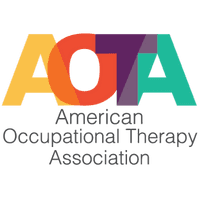Why Occupational Therapy Can Be Life-Changing for Children with ADHD

And What the Right Approach Looks Like
When a child is diagnosed with Attention Deficit Hyperactivity Disorder (ADHD), many families are left wondering, “What’s the best way to help?” While medication can support attention, it doesn’t teach the lifelong skills children need to regulate emotions, plan their actions, or build independence.
That’s where occupational therapy (OT) comes in.
Occupational therapy supports children with ADHD by helping them strengthen the foundational skills they need to thrive at home, in school, and in everyday life—including attention, executive functioning, emotional regulation, sensory processing, and more.
The Core Benefits of OT for Kids with ADHD
1. Improves Executive Functioning Skills
Children with ADHD often struggle with executive function—a set of mental skills that include planning, organization, task initiation, time management, and working memory. These are the very skills required to follow instructions, complete homework, transition between tasks, or maintain routines.
Occupational therapists help children:
Break down tasks into manageable steps
Build routines and visual schedules
Strengthen memory and organizational strategies
Develop coping strategies for frustration or overwhelm
2. Supports Emotional and Behavioral Regulation
ADHD is a disorder of regulation—not just attention. Children may have big emotional reactions, trouble calming down, or impulsive behavior. OT addresses these challenges by helping children:
Recognize and name emotions
Use calming tools and sensory strategies
Practice replacement behaviors for impulsivity
Learn to pause and make intentional choices
3. Addresses Sensory Processing Differences
Up to 40–60% of children with ADHD have sensory processing challenges. Some children are overwhelmed by bright lights, noise, or touch. Others may seek stimulation, crashing into furniture or constantly fidgeting.
OTs trained in sensory integration can:
Identify specific sensory needs
Create sensory diets (structured sensory input throughout the day)
Recommend tools like weighted items, movement breaks, or fidgets
Help families adjust environments to reduce sensory overload
4. Boosts Independence in Daily Life
Occupational therapy isn’t just about school success. It supports your child’s activities of daily living—from brushing teeth to organizing a backpack to staying on task during meals. OT makes everyday life smoother by:
Teaching step-by-step routines
Using visuals and reminders
Practicing real-world skills during daily activities
Coaching parents on how to support progress at home
5. Empowers Parents Through Education and Realistic Expectations
Children with ADHD often experience a developmental delay in areas like attention, behavior, and emotional control. Occupational therapists help bridge the gap between a child’s chronological age and their developmental stage—so parents can better understand what’s realistic to expect.
OT supports parents to:
Understand ADHD as a delay in skill acquisition, not defiance or laziness
Set developmentally appropriate goals for their child
Reduce power struggles and frustration at home
Respond with empathy and confidence instead of stress
Learn how to be the child’s “external executive function” until they mature
When parents are equipped with knowledge, tools, and support, they become the most powerful agent of change in their child’s life. This shift in mindset can dramatically reduce family tension and accelerate progress across home, school, and social settings.
So What Does the Right OT Approach for ADHD Look Like?
Many families pursue OT through traditional routes—weekly in-clinic sessions, often determined by what insurance allows. While this model can help, it has major limitations, especially for ADHD:
Sessions are often once a week with limited follow-through
Therapy is delivered in a clinical setting, not the child’s actual environment
There is minimal parent involvement, reducing consistency and carryover
Insurance often dictates frequency and goals, not the family’s needs
Progress is slower, and skills don’t always translate to home and school
But research and lived experience point toward a better method for helping kids with ADHD succeed.
The Ideal OT Approach for Children with ADHD Is...
✅ High-dosage—more frequent therapy leads to faster gains
✅ Embedded in daily life—practice and apply skills in real environments
✅ Parent-led and therapist-guided—so change happens every day
✅ Focused on whole-child development—not just one behavior or diagnosis
✅ Custom to each family—because no two children are the same
✅ Sensory-aware—recognizing how regulation and sensory input are connected
✅ Unbiased—driven by your goals, not red tape or clinic constraints
Kinspire: The Modern Solution Families Deserve
At Kinspire, we’ve reimagined occupational therapy to deliver faster progress, greater impact, and better support for families of children with ADHD.
We match each family with a licensed pediatric OT within 24 hours—no waitlist, no red tape.
Then we provide:
Daily access to your OT via our Continuous Care Platform™
Live coaching to help parents apply strategies at home and school
In-app tools to send videos, ask questions, and track wins
Sensory-informed care that helps kids regulate and thrive
Whole-family collaboration, including unlimited care team invites
We don’t wait for next week’s appointment. We help today, because when it comes to helping your child succeed, every moment matters.
Ready to Explore How Kinspire Can Help?
Complete our short Family Discovery Form and get matched with a licensed occupational therapist in 24 hours.
🔗 Start here to book your free consult.
Let’s help your child grow with confidence—every single day.




